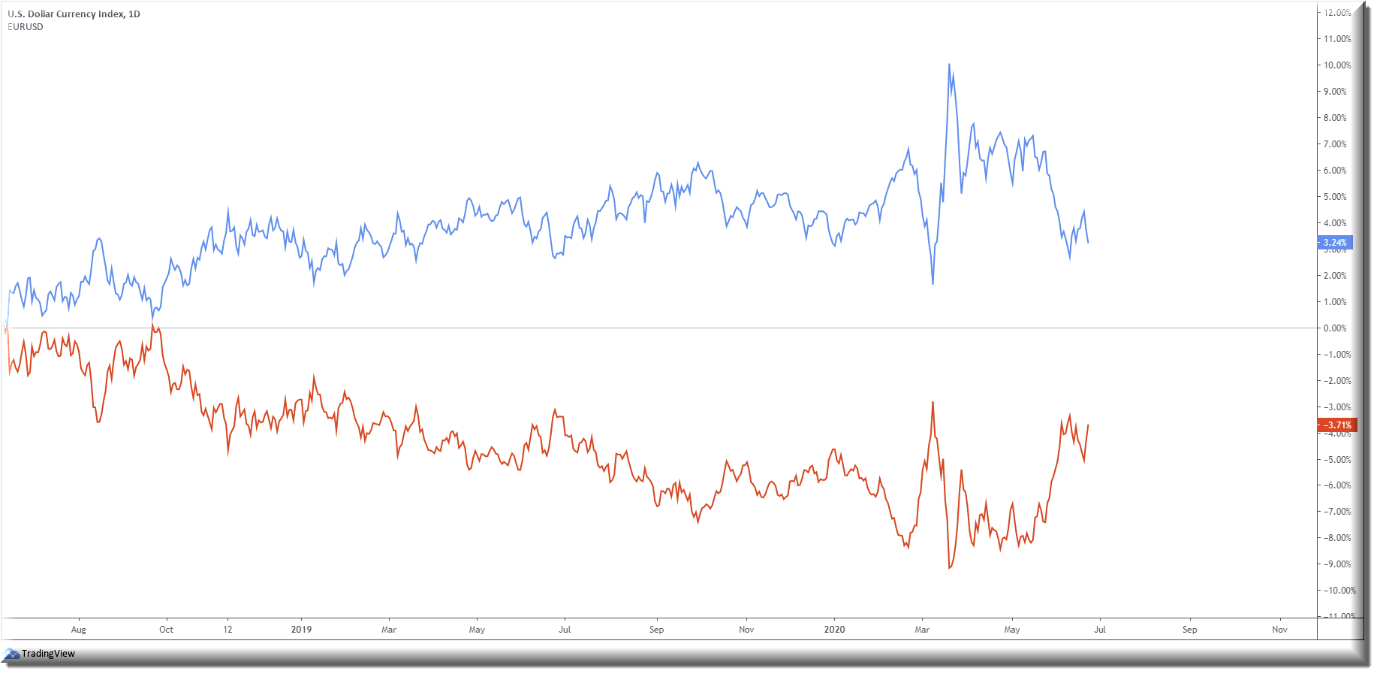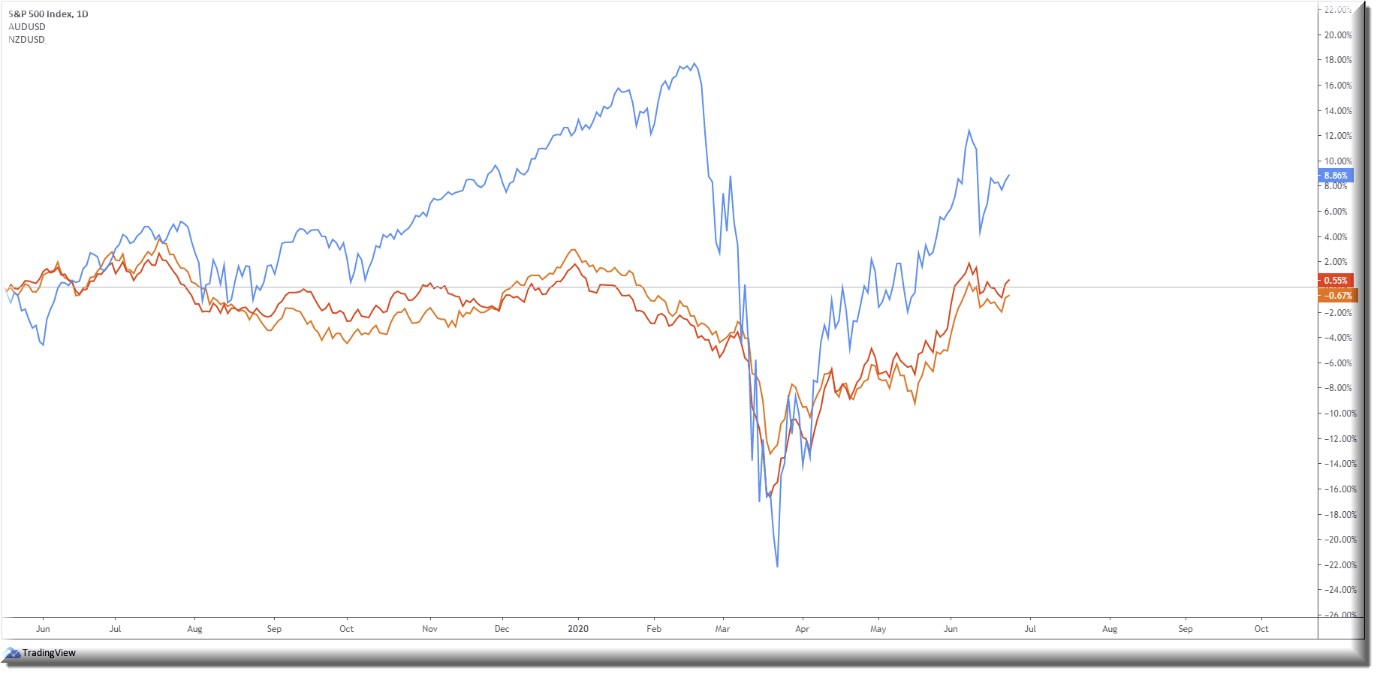To be an effective Forex trader, understanding the connection, or correlation, between financial markets, is essential.
A correlation measures the relationship between two variables.
- A positive correlation implies two variables move similarly
- A negative correlation implies two variables move in opposite directions
In addition to identifying high-probability trade setups in the Forex market, correlations can be used to manage risk exposure. For the purpose of this article, however, the focus will be on the former.
Correlation Coefficient
The correlation coefficient estimates the correlation between two markets, ranging from +1 (+100) to -1 (-100).
- A value of +1 represents a perfect positive correlation
- A value of -1 represents a perfect negative correlation
A value of 0 implies no correlation exists.
Figure A displays a basic correlation table for USD/CHF.
(Figure A)
Several methods exist to calculate correlation, though most prominent is Pearson’s correlation coefficient, a complex calculation computing the direction and strength of the linear relationship.
Currency Market Correlations
Currency pairs EUR/USD and GBP/USD are an example of a close positive relationship. On a daily basis, approximately 70% (+0.70) of the time the two pairs move in similar fashion (figure 1.A – EUR/USD blue – GBP/USD black).
The two markets tend to move in the same direction largely due to dollar movement. Other factors include the euro and British pound serving as two of the world’s major reserve currencies.
(Figure 1.A)
Two well-known inversely correlated currency pairs, however, are EUR/USD and USD/CHF (see figure 1.B – EUR/USD blue USD/CHF black).
On a daily basis, the two exhibit a negative correlation approximately 90% of the time (-0.9), partly due to the dollar factor.
(Figure 1.B)
EUR/USD – USD/CHF Trade Example
Acknowledging EUR/USD and USD/CHF often display a negative correlation, traders can use this to their advantage.
Figure 1.C shows daily price movement on EUR/USD tested demand, an area drawn from April 2017. Note the test was accompanied by a deep oversold RSI value. However, the demand and RSI signal may not have been sufficient to seduce buyers. Yet, recognising at the same time USD/CHF daily movement also tested resistance, along with the pair’s RSI indicator displaying hidden bearish divergence, may have been enough to tempt either a EUR/USD long off demand or a USD/CHF short from resistance.
Either way a strong correlation signal was present, adding weight to both setups.
(Figure 1.C)
The US Dollar Index
The US dollar index, or DXY, measures the US dollar’s value against a basket of six major foreign currencies. Europe’s shared currency (EUR) controls the largest weight in the index at approximately 58%, followed by the Japanese yen (JPY) at 14% and the British pound (GBP) at 12%.
Given the euro’s weight, a strong inverse correlation exists between the US dollar index and EUR/USD. The DXY exhibiting oversold conditions, an indication the US dollar may rally, therefore points to the possibility of a EUR/USD sell. Likewise, a DXY overbought signal indicates a EUR/USD buy.
The methods traders use to construct overbought and oversold signals are trader dependent. Some will favour price action, such as support and resistance levels; others may prefer momentum oscillators, such as the relative strength index (RSI).
Figure 1.D illustrates the negative correlation between the US dollar index (blue) and EUR/USD (orange).
(Figure 1.D)
Additional Correlations
The positive correlation between the Canadian dollar and crude oil (commodity trading) is a popular watch for many USD/CAD traders. Canada is among the top oil producers in the world, producing 5.5 million barrels of oil each day. Due to the demand for oil out of Canada, the Canadian dollar is also sought after. An advance in oil, therefore, tends to boost the Canadian dollar, while a dip in oil prices often weighs on the currency.
Another handy correlation to be aware of is the relationship between risk currencies and global equities. See figure 1.E for a visual daily correlation between the S&P 500 (a market-cap-weighted index holding 500 of the largest companies in the US), the AUD/USD, and NZD/USD. Upbeat risk sentiment often pulls the Australian dollar and New Zealand dollar higher. A drop in sentiment, on the other hand, can weigh on the aforesaid currencies.
(Figure 1.E)
One final point to consider is correlations can, and do, change.
Market sentiment and worldwide economic forces change often. For that reason, traders are urged to monitor correlations closely; it could mean the difference between a winning and losing portfolio.
To make life easier, traders may want to consider our MT4 Trader Toolbox, offering a number of advanced trade assistance apps, including a correlation matrix. The Correlation Matrix shows the correlation between symbols over a configurable timeframe and the number of bars, for example, the last 100 H1 bars.
DISCLAIMER: The information contained in this material is intended for general advice only. It does not take into account your investment objectives, financial situation, or particular needs. FP Markets has made every effort to ensure the accuracy of the information as at the date of publication. FP Markets does not give any warranty or representation as to the material. Examples included in this material are for illustrative purposes only. To the extent permitted by law, FP Markets and its employees shall not be liable for any loss or damage arising in any way (including by way of negligence) from or in connection with any information provided in or omitted from this material. Features of the FP Markets products including applicable fees and charges are outlined in the Product Disclosure Statements available from FP Markets website, www.fpmarkets.com, and should be considered before deciding to deal with those products. Derivatives can be risky; losses can exceed your initial payment. FP Markets recommends that you seek independent advice. First Prudential Markets Pty Ltd trading as FP Markets ABN 16 112 600 281, Australian Financial Services License Number 286354.














 Access +10,000 financial
instruments
Access +10,000 financial
instruments

